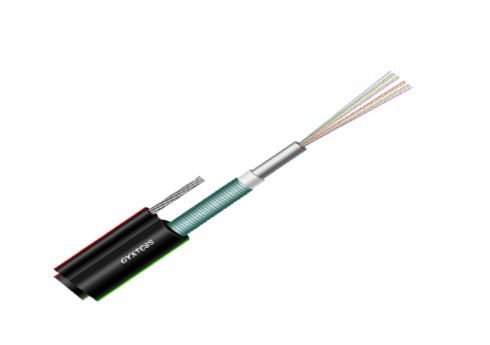When choosing a specific fiber optic cable, you need to be absolutely clear about its application. Determining what the cable will be used for is critical to making the right choice.
However, you should also have a very solid idea of where to use that cable. The importance of its location depends on the type of fiber optic cable you end up using. If you are absolutely sure that the fiber optic cable you need will be placed indoors, you should choose a typical indoor fiber optic cable.
Having said that, if the cable is going to be used outside of an enclosed area, or if it is believed that the desired cable may end up being used outdoors, you should choose an outdoor cable.

Fiber optic air-to-air cables may be rare in home or personal applications, but their usage is very common in larger and more commercial settings. The need for this particular type of fiber optic cable is explained by its resistance to external conditions that can sometimes be very extreme.
Outdoor rated fiber optic cables are primarily used to cover the worst weather conditions: high temperatures or potential fire, heavy rain or storms, large amounts of snow and intense humidity. In any case, the key here is to protect data transmissions, often over long distances.
Other factors to consider include exposing those cables to toxic substances and even animals that could harm the cable's outer layers. This explains the strength and thickness of some of these cables: they just need to ensure that the core of the cable is not affected, while the outside of it may be damaged.
The most common outdoor fiber optic cables are loose tube, ribbon, overhead, and armored fiber optic cables.
Loose-tube fiber optic cables typically consist of an array of multiple fibers housed inside a small plastic tube. These fibers surround the central cable and are jacketed around it. This configuration allows it to contain many fibers in one splice, so the final fiber count cable tends to be large.
Ribbon cables are often one of the densest cables in telecommunications because of the rows of fibers inside them. Also, they are stacked on top of each other. Their most common application is in power plants, so they tend to be filled with gel to keep water out.
Armored fiber optic cables are typically used in areas prone to animal plagues, especially rodents, since the metal armor is usually placed between two jackets. That's why they exist a lot in factory applications. These cables can withstand a lot of stress, so they are the first choice when installing in rocks or other similarly challenging soils.
These outdoor flat fiber optic cables are also often used in data centers because they are often installed underground, so concerns about these cables being squashed need to be alleviated. Due to their metal armor, these cables must be properly grounded, so installers cannot ignore this.
Aerial fiber optic cables are the solution for installations that require large height placement. This special condition means that the fiber optic cable has a special resistance to permanent tension caused by the center of gravity of the fiber optic cable and continuous oscillation due to strong wind and ice loads. Some of these cables are also referred to as self-supporting cables because they are usually made with heavier jackets and stronger metal strength members.
If you need to get some outdoor fiber optic cables, you can contact us and send us your specific requirements for installation requirements. We design and create custom solutions for custom projects and can ship very quickly, so feel free to contact us and we will do our best.
Related Blog
Related Products